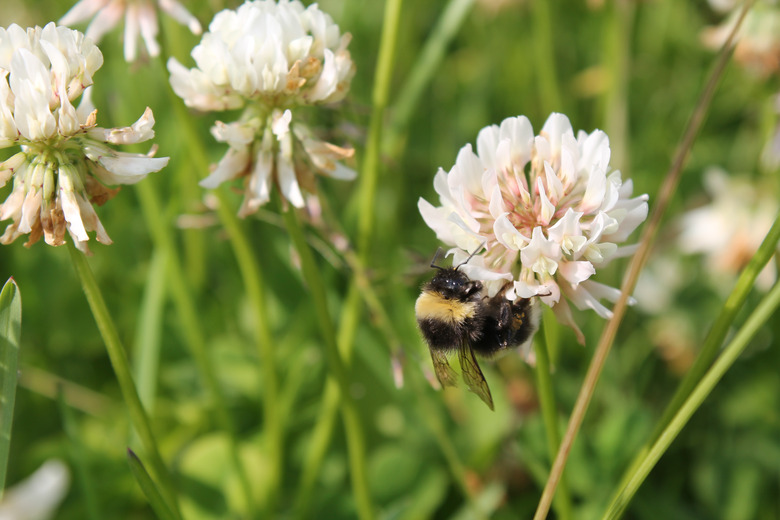How To Kill Clover In A Flower Bed
We may receive a commission on purchases made from links.
When clover (Trifolium spp.) invades a flower bed, it competes with flowers for water and nutrients, but digging, spreading mulches, and applying herbicides provide effective control. White clover (Trifolium repens) is a common weed in flower beds and lawns. This perennial clover is hardy in U.S. Department of Agriculture plant hardiness zones 3 through 10 and grows 3 to 6 inches tall and 12 to 18 inches wide. White, globe-shaped flowers appear in late spring, leading to self-seeding, and the plant spreads invasively through creeping stems.
Weed Clover Manually
Weed Clover Manually
Regular hand weeding controls clover in a flower bed over time. Clover is not deep-rooted, and it can be removed by grasping the center of a plant, and pushing a trowel underneath to lift the root system out of the soil. Remove all the clover plants in a flower bed, and check under low, spreading flowers for young, small clover plants.
A flower bed that's been infested with clover for longer than one season contains plenty of clover seeds, and small pieces of root or stem remaining after hand weeding grow into new plants. Check the flower bed every week for clover plants and remove them.
Use Landscape Fabric and Mulches
Use Landscape Fabric and Mulches
Landscape fabric that allows water to permeate and organic or nonorganic mulches help control clover in a flower bed. Clover does not survive long when covered with landscape fabric and a thick mulch that cuts out light to the plants.
Remove clover plants from the flower bed by digging or pulling them up, and spread landscape fabric over the bare soil between the flowers. Spread shredded bark, leaf mold, compost, or another organic mulch in a layer 3 inches thick over the fabric, or spread a 1- to 2-inch layer of gravel or another nonorganic mulch. Don't pile mulch against flower stems as this can cause rotting. Check the flower bed every two or three weeks and pull up any clover plants that appear at the edges of the mulch.
Apply Postemergent Herbicides
Apply Postemergent Herbicides
Postemergent herbicides control clover in a flower bed, but they must be used carefully to avoid harming flowers. Glyphosate is a postemergent herbicide that controls clover by moving down to the plant's roots. Protect flowers before spraying by placing plastic or thick paper bags over them, and loosely tying the bases with twine.
Put on long pants, a long-sleeved shirt, safety goggles, and gloves on a dry, still day, and spray clover plants with a ready-to-use 2 percent glyphosate herbicide. Wait until the glyphosate has dried before removing the coverings from flowers. Glyphosate takes up to two weeks to work, and you may need to spray persistent clover plants twice.
Apply Preemergent Herbicides
Apply Preemergent Herbicides
Clover seeds in the soil can sprout and reinfest a cleared flower bed, but preemergent herbicides provide control. Preemergent herbicides also prevent flower seeds from sprouting and can damage young plants. Only use preemergent herbicides in an established flower bed.
Put on protective clothing and apply a ready-to-use preemergent herbicide to the soil surface, avoiding contact with the flowers. Apply the product at a rate of 7 1/2 to 9 ounces per 100 square feet. Water the flower bed with 1/2 inch of water to activate the herbicide.
